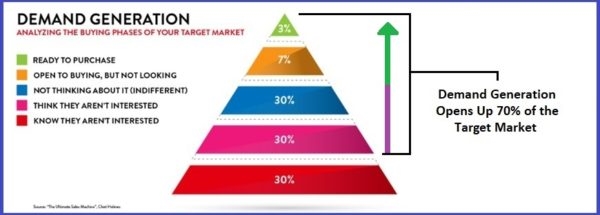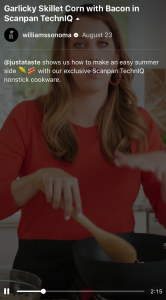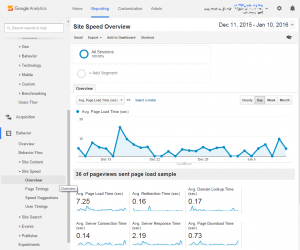— December 15, 2017
Many companies have adopted LinkedIn as part of their sales strategy because they see major potential in having direct access to their ideal clients’ decision makers. However, not all companies have seen an immediate return on their investment.
I find that this is happening because of a focus on quantity rather than quality. Even the leading LinkedIn lead gen firms are focusing on quantity by promising X number of connections, X number of LinkedIn group members, and X number of meetings. The traditional thinking is that more contact points lead to more wins, but unfortunately companies around the world are reporting diminishing returns.
Tactical LinkedIn lead gen typically only attracts tactical customers
These are the customers who will unnecessarily take up your time, squabble over pennies, and never be satisfied even if you’ve gone well beyond expectations.
LinkedIn ABM’s Chief LinkedIn Expert Kristina Jaramillo recently spoke to the President and CMO of a logistics company who were both focused on the quantity of leads they received weekly. They proceeded to explain how another a popular social media lead gen firm delivered 5-to-10 sales leads per week, which was considered satisfactory.
However, the sales leads were terrible! 90% of the calls were with prospects who were not in the right stage of the buying process, or the calls were with junior level supervisors rather than senior level decision makers. The people who said ‘yes’ to a call were only looking for free information, because they had no intention to purchase support.
What good were those leads if there were no relationships or revenue opportunities created? Quality should be the focus before quantity.

Tactical LinkedIn lead gen only focuses on 10% of your market
A volume, template, or campaign-based play will only move conversations forward with prospects who were ‘already’ looking and are leaning towards your solution. It does not provide any catalyst for those:
- That do not see a differentiated value
- That are stuck in status quo
- That are satisfied with using a competitor’s solution because they do not see “gaps” in their current approach, process or technology
Only when sales arms themselves with relevance and insight, can they use LinkedIn to pro-actively create the window for demand and revenue rather than passively wait for it. Below, I’ll show you how to take a strategic approach that drives revenue with ‘A’ quality strategic accounts.
Profiles
- Don’t Show your resume, talk about your achievements and awards, or advertise your company’s solutions.
- Do Talk about how you’ve resolved customer pain points by showing a relevance at the industry, company, rank, employee and customer personal levels.
Sales is not about us, it’s about our customers. Talking about your own solution or your own company is the last inch, and we’ve got a few miles to go before we get there.
Content, posts, and discussions
- Don’t Share articles and links with generic comments like ‘Excellent read’ or ‘Valuable info.’
- Do Share articles while adding your own thought leadership commentary. Describe whoshould read the article, why it’s relevant to them, and specifically what they’ll gain by doing so.
- Don’t Only share passively in groups and feeds – don’t wait for customers to come to you!
- Do Use content pro-actively. If the marketing content can’t be used by sales in live online and offline conversations, it is the wrong content.
- Don’t Share generic tips and tricks articles, posts, or messages. This helps your competitors.
- Do Use commercialinsight, which is insight that will lead back to your competitive advantages without leading to the strengths of your competition.
- Don’t Use community groups as a generic blog or news feed.
- Do Use community groups as a qualifying step for prospects, as a holding pen for your future sales funnel, and as a way to spark discussions around the customers gaps and pain points.
- Don’t Write articles just to fill up a calendar. You likely only need 1 to 2 per month, not per week.
- Do Write them specifically for the accounts that are currently in, or that you would like to attract into your sales funnel. If the articles being written are not directly moving the clients forward in the sales funnel, they are most likely missing relevance or insight.
Content should be creating an ‘Aha’ moment for the customer, so that they become ready to speak to a salesperson about how you’ll fix their pain points. Otherwise, we get stuck discussing why they should consider change in the first place.
Connections
- Don’t Reach out to just the one executive decision maker.
- Do Reach out to all 5-8 of the key influencers in the decision-making group.
- Don’t Send the same messages to everyone.
- Do Tailor each message to be directly relevant to their personal, rank, and customer needs. As with leading someone to click a link to content, leading someone to connect with you requires telling them what value they’ll gain by doing so.
- Don’t Bombard them with generic follow-up messages, or use personal, friendly messages which do not progress the business conversation.
- DoAdd tension and add value at every touch point – we must create a sense of urgency, because deals fall off as soon as the urgency is lost.
LinkedIn and prospecting in general is all about building one-to-one human connections. If I’m receiving a spam message that went out to 10 or even 1,000 other people, I may not feel your warmth.
By extension, businesses are comprised of teams of people. These are real human beings with real feelings and day-to-day lives, so we need to ensure they’re all supported and understood before suggesting that changes to their company’s operations.
Segmentation

Not all accounts are equally profitable, so not all accounts should be pursued identically. Preserve your resources for those that matter most, and ensure that sales is receiving the appropriate back-line marketing support to provide research, intel and customized content.
Segment your customers into priority and non-priority accounts.
Quantity versus quality: the difference in results
Tactical Lead Gen in 3 Years
- 1% to 2% average close rate
- 120 calls or emails per day
- 10% of contacts reply
- 10% of appointments are at Director/VP/C-level
- 10% of appointments result in a follow-up
- Talks about yourself instead of clients
- No optimization of deal size
- No optimization of sales cycles
- No optimization of profit margin
- No optimization of cost per close.
Strategic Lead Gen in 3 Months
- 50% or higher close rate on conversations moved from digital to live
- 75% of first live conversations create a mobiliser/champion
- 90% of first live conversations are at Director, VP or C-level
- 90% of first live conversations result in a follow up meeting
- 90% of conversations are about customer gaps and do not mention yourself
- Sales cycles shrink towards a 3-to-5 meeting average
- Deal size and margin continuously improve
Strategy: don’t leave home without it
Today’s more educated buyers demand to be treated with respect. This is why I say it’s time that sales and marketing leaders take the leap into the new millennium, and let go of the tactical practices of the past, which are preventing revenue growth.
This is how we’ve helped our clients to double their deal size, double their profit margins, halve their sales cycles, and in some cases to reduce both customer and sales team turnover. Perhaps most importantly, even small startups have used these techniques to break into global enterprise accounts.
Could your company benefit from more reliable prospecting and closing?
Digital & Social Articles on Business 2 Community
(103)
Report Post






